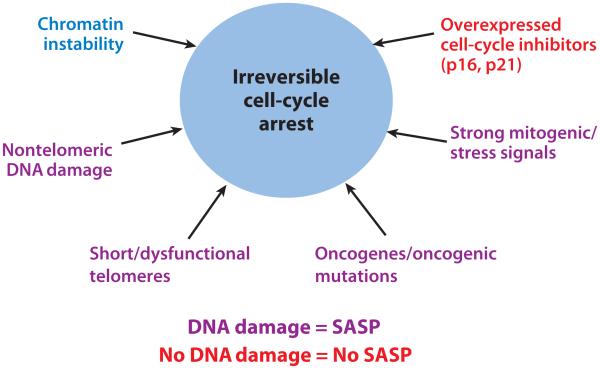Figure 1.
Multiple types of stimuli can provoke cellular senescence and a senescence-associated secretory phenotype (SASP). When irreversible cell-cycle arrest is triggered by severe DNA damage (i.e., dysfunctional telomeres or oncogenic stress), the SASP occurs in senescent cells. However, when a senescent-like phenotype is triggered in cells that overexpress cell-cycle inhibitors such as p16 or p21, cells undergo a growth arrest with many characteristics of senescent cells, but not a SASP.

